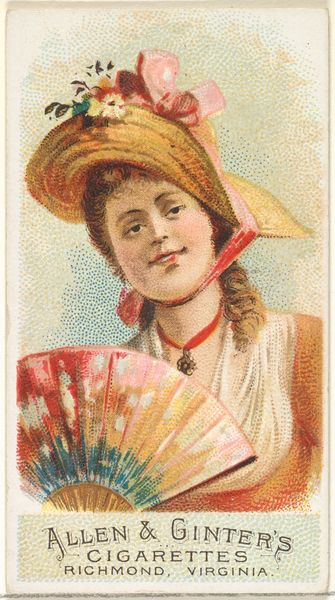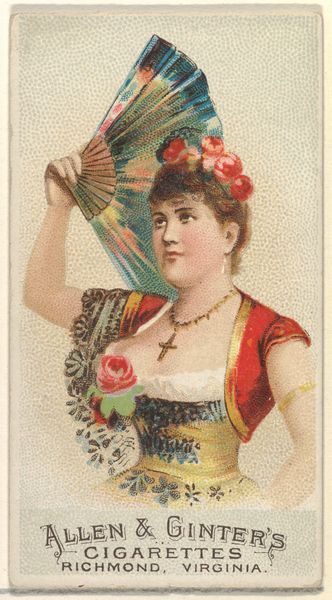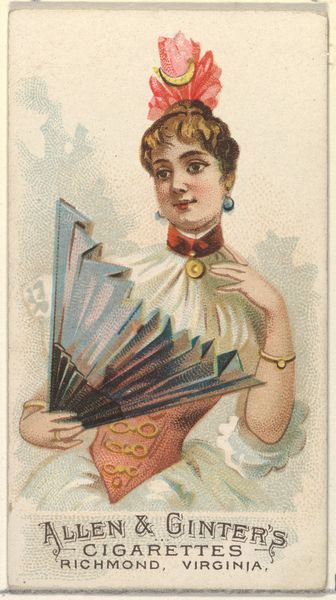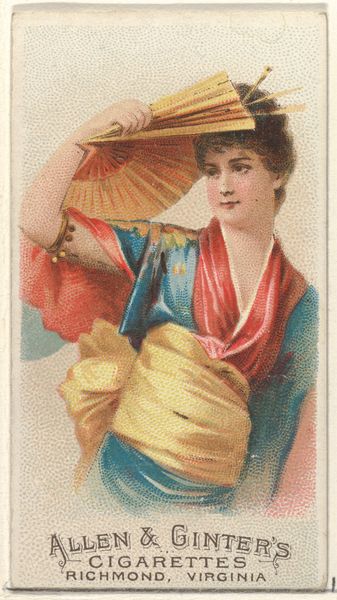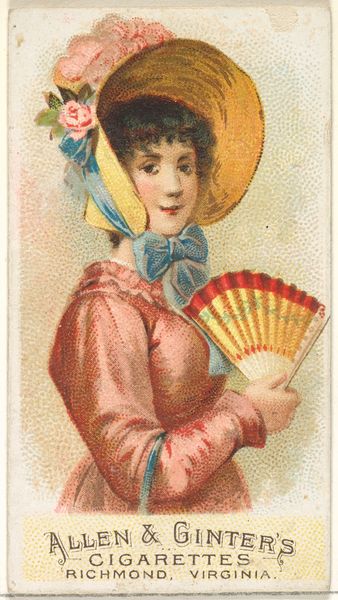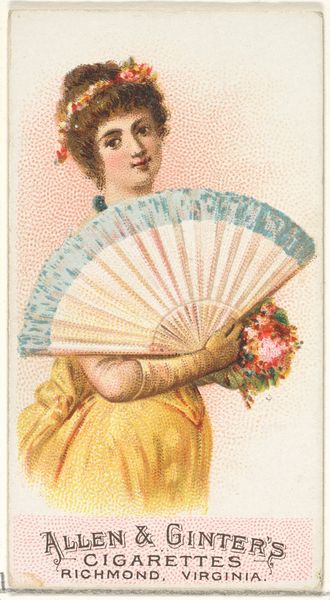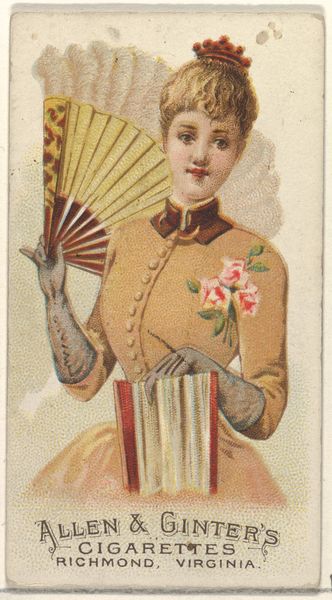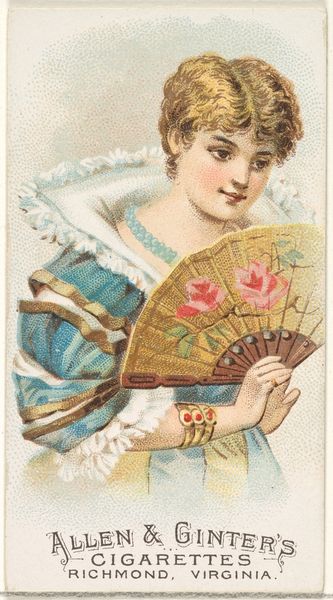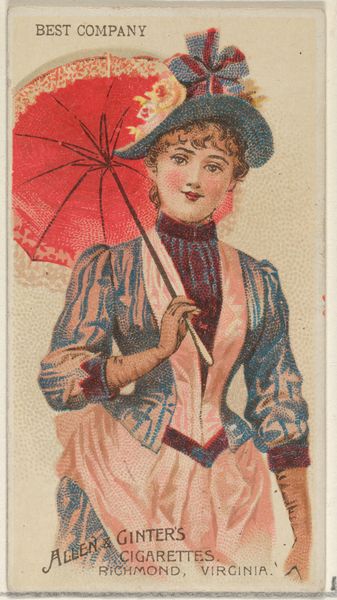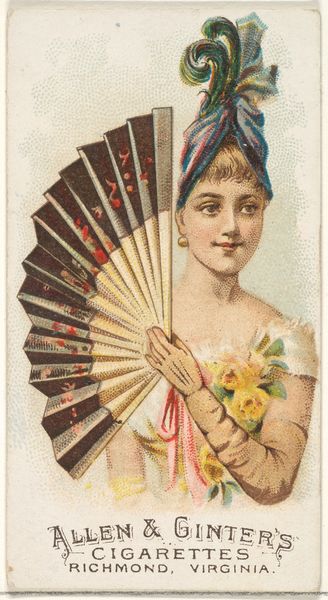
Plate 46, from the Fans of the Period series (N7) for Allen & Ginter Cigarettes Brands 1889
0:00
0:00
#
portrait
# print
#
coloured pencil
#
decorative-art
Dimensions: Sheet: 2 3/4 x 1 1/2 in. (7 x 3.8 cm)
Copyright: Public Domain
Curator: Looking at this small but vibrant image, one can sense an era trying to define itself. This is Plate 46 from the "Fans of the Period" series, a colored-pencil print created around 1889 by Allen & Ginter. Editor: Okay, my first thought? Whimsical. Like Marie Antoinette goes to a garden party after raiding a craft store. All those flowers, the slightly off-kilter fan…it's trying so hard to be elegant but there's a hint of playfulness. Curator: Allen & Ginter was a cigarette company. They included collectible cards like this one to stiffen cigarette packs and attract consumers, tapping into a growing public interest in Japonisme, the West's interpretation of Japanese art and design. It was mass marketing aiming at an elite aspiration. Editor: Oh, totally. See the fan? Instant nod to Japanese prints! And yet, there’s this very *Western* gaze in the woman's posture, the tilt of her head. She looks like she's about to gossip, not contemplate Zen gardens! It is interesting how such consumer products co-opt styles, twisting their original context into easily consumed fantasies. Curator: The “Fans of the Period” series is insightful. It places the fan not just as an object of beauty, but as a social signifier, hinting at coded gestures and veiled conversations among women in public life. It subtly speaks volumes about Victorian gender dynamics and social performativity. Editor: Coded gestures? Totally buying that. It's like she's daring you to interpret what the fan *really* means. Though, let's be real, half of it is probably, "It's hot in here, can someone get me a lemonade?" And who was this person? Was this a rendering of some known figure or a generalized likeness. Curator: The mass-produced nature doesn’t allow that type of insight. Her identity isn't the point. She's an idealized representation serving a specific marketing strategy tied to emergent social and aesthetic trends. It's both artistic expression and corporate messaging entangled in late 19th-century cultural shifts. Editor: Which really underscores how our desires get wrapped up in these manufactured images, right? We consume an idea of sophistication, not just cigarettes. It is quite a striking confluence to contemplate even now. Curator: It prompts a conversation about how we perceive value and authenticity today. A fleeting glimpse of an era packaged as a promotional gimmick opens up avenues of discourse on gender, commercialism, and cross-cultural aesthetics. Editor: I know, it is strangely compelling to be led to such considerations by something made for such a low-brow context. But I see something new every time. Thanks for the deep dive.
Comments
No comments
Be the first to comment and join the conversation on the ultimate creative platform.
